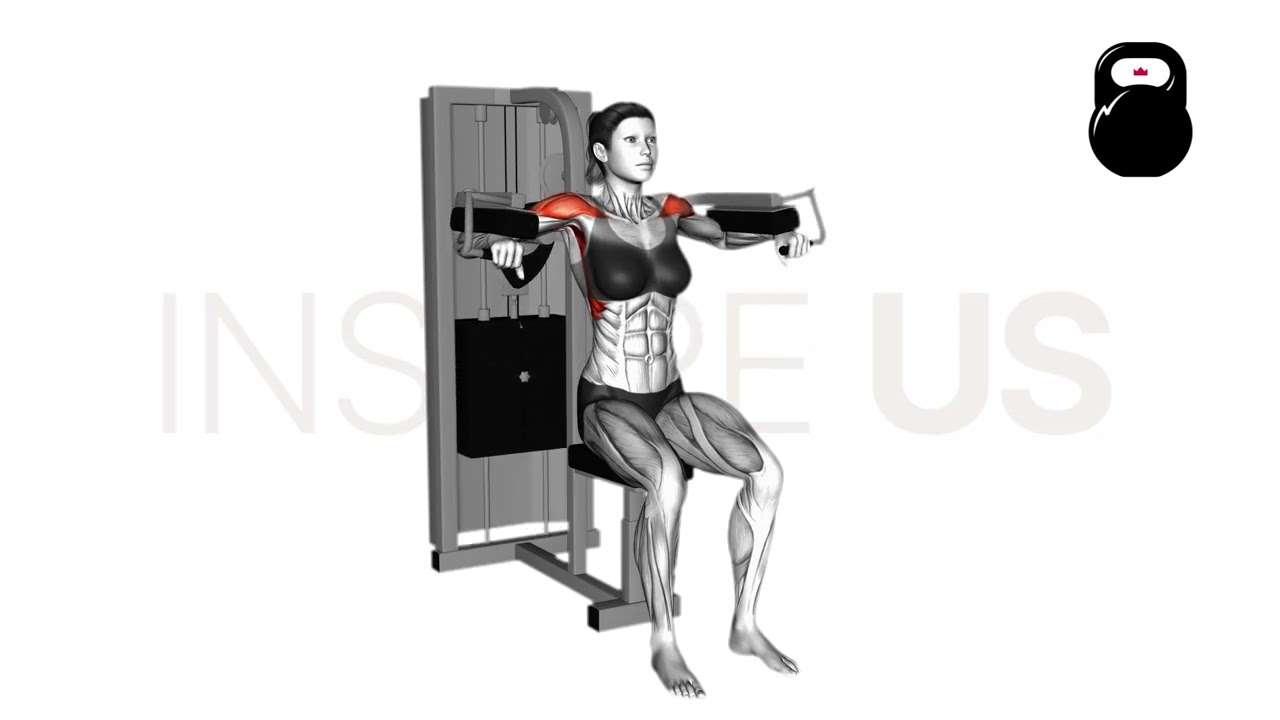Lateral Raise Machine: Benefits, Muscles Worked, and More
The machine lateral raise is a variation of deltoid raise that makes use of a dedicated shoulder raise machine for greater adjustability, convenience and safety.
In actual training, the lateral raise machine is used by weightlifters mainly to build whole deltoid mass and dynamic strength through constant machine-based tension.
What are Machine Lateral Raises?
The machine lateral raise exercise is an open chain isolation exercise primarily targeting the anterior and medial heads of the deltoids muscle group.
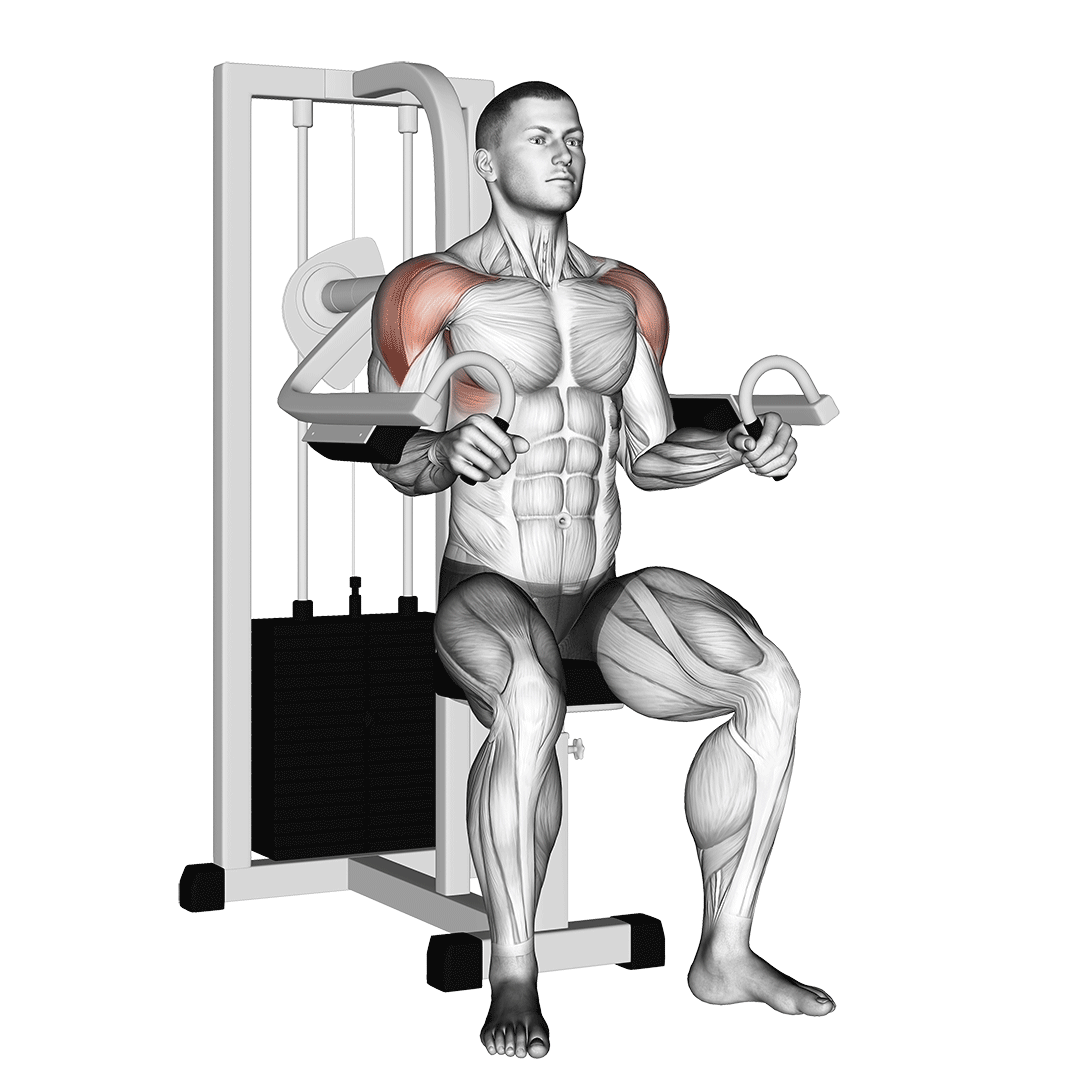
Because of their low impact, low loading capacity and high capacity for volume, the machine lateral raise is most often seen playing the role of a hypertrophy-focused accessory movement. Bodybuilders, fitness models and other types of lifters seeking greater deltoid mass may find any form of lateral raise to be particularly advantageous.
In comparison to free weight lateral raises, the machine variant features greater distribution of tension throughout the arm (on account of the pads), generally greater adjustability and a more consistent level of tension throughout the entire ROM.
Are Machine Lateral Raises Right for You?
Machine lateral raises are quite safe and entirely accessible to even complete novices. If your gym doesn’t exactly have a lateral raise machine, try dumbbell or cable lateral raises instead.
Accessibility aside - those with a history of injuries to the shoulder girdle or anywhere else in the shoulder structure should first speak to a medical professional prior to performing any form of lateral raise.
How to Use a Lateral Raise Machine
To perform a repetition of lateral raises with their namesake machine, the lifter seats themselves within the padded section, usually facing the stack of weights.
Adjusting the resistance to a low or moderate level, they then align the pads with their elbows or upper arms as they grasp the handles in both hands.
Pushing the chest out, keeping the back straight and ensuring the deltoids are the sole source of force, the lifter then raises their arms laterally out to the sides.
Once the upper arms are parallel to the shoulders, the lifter slowly releases tension in their deltoids and allows the resistance of the machine to abduct their arms back to the sides of their torso.
From this point, the repetition is considered complete.
Remember to avoid leaning forward at the torso or raising the upper arms too high over the shoulders, as both increase strain within the ball and socket joint of the shoulder - leading to a greater risk of injury.
Sets and Reps Recommendation:
Machine lateral raises are meant to be performed in a light and slow manner.
2-3 sets of 12-18 repetitions should suffice for building mass in the deltoids.
What Muscles are Worked by Machine Lateral Raises?
Machine lateral raises are an isolation exercise, meaning they only really target a single muscle group at once. These, of course, are the three heads of the deltoid muscles.
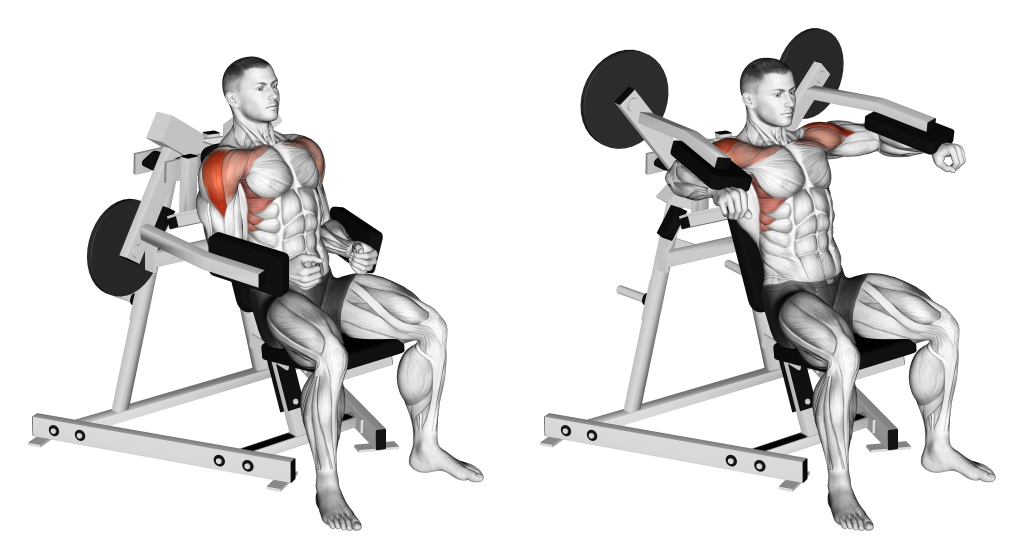
Depending on the specific angle the arms are raised at as the exercise is performed, either the medial (lateral), anterior or posterior deltoids are emphasized more than the remaining two.
Generally, if performing a standard lateral raise with the upper arms parallel to the shoulders, it is the medial and anterior deltoids that are worked more than the posterior deltoid head.
One can perform the exercise facing in the opposite direction to instead emphasize the posterior head - although this is an entirely separate movement known as a machine rear delt fly.
What are the Benefits of the Lateral Raise Machine?
Lateral raise machines are performed for their capacity to develop both muscle mass and greater function throughout the entire shoulder structure.
One of the Best Deltoid Isolation Movements for Mass, Stability and Strength
Lateral raises as a whole are considered to be excellent for developing mass alongside both isometric and dynamic strength in the deltoid muscles.
As an isolation exercise with a considerably large range of motion, the deltoids are subjected to both an extended length of time under tension and are otherwise not limited by fatigue or weakness in other muscle groups.
These aspects add up to a movement that is specifically geared for not only inducing muscular hypertrophy, but also improving the actual stability and strength of the shoulders themselves.
For the best results, also perform a heavy compound movement involving the deltoids in part. Barbell overhead presses, Arnold presses or even the bench press will also train the shoulders in a synergistic manner.
Reinforces Shoulder Rotation and Arm Abduction/Adduction
With a full range of motion and complementary strengthening of the deltoid muscles, regularly performing machine lateral raises will also improve the lifter’s capacity to perform shoulder rotation alongside abduction and adduction of the arms.
This will most often present as greater stability while performing said biomechanics, a greater range of mobility and overall easier conscious movement as far as the benefiting areas are concerned.
Those with difficulty using their deltoids to abduct their arms - or lifters who have trouble maintaining neutral shoulder positioning during other exercises - will both find that machine lateral raises help correct these issues.
Comparatively Greater Safety, Loading Capacity and Adjustability
In comparison to the many free weight variants of lateral raises, the machine lateral raise is considerably safer due to its more even distribution of force throughout the arm.
Such distribution, of course, is further built upon by the inherently self-limiting and adjustable nature of all resistance machines - allowing the lifter to customize certain aspects of the machine to better fit their physiology.
As a further benefit of this machine-based nature, the machine lateral raise also allows for somewhat greater loading to occur (in comparison to its free weight counterpart) simply because the exercise is self-stabilizing, meaning less isometric contraction will be involved.
Minor Stability Carryover to Compound Lifts
In nearly any upper body exercise, the deltoids will play a stabilizing role - if not a dynamic one as well.
Regularly training the deltoid muscles with machine lateral raises will lead to a moderate level of carryover to these other exercises, leading to a reduced risk of injury, more efficient force output and overall greater stability as a whole.
Greater stability built in this way is especially important for exercises like upright rows, chest presses and overhead presses, as they rely on the deltoids heavily for stabilizing the entire movement.
Common Lateral Raise Machine Mistakes
Although considered to be quite a safe exercise, avoid the following common mistakes when performing machine lateral raises.
Poor Torso Angle
To avoid creating additional stress within the shoulder joint, lifters should aim to keep their torso upright and to ensure that they are not leaning forwards as they perform the machine lateral raise.
Apart from increasing the movement’s impact on the joints, leaning forwards will also cause other muscle groups like the pectorals to become more involved than necessary within the exercise - shifting emphasis away from the deltoids.
A good cue to follow is to align the head over the hips so that when the lifter looks down they cannot see the hip crease made by being in a seated position.
Protracting Scapula
In order to properly engage the deltoids and prevent any issues relating to the shoulder blades, lifters should avoid protracting (winging forwards) their scapula. This not only engages the latissimus dorsi and draws emphasis away from the deltoid muscles, but also affects both the shoulder joint and shoulder blades as well.
For the best results, the machine lateral raise should be done with the shoulder blades either partially retracted or simply relaxed, playing as little a part within the movement as possible.
Raising Arms Too High
Much like leaning forwards, raising the arms too high over the parallel point of the shoulders can subsequently also lead to irritation of the joint itself.
In order to ensure that the head of the humerus rotates without impinging within the shoulder joint, the shoulders should remain neutral and the arms should only be raised up to a height parallel with the shoulder itself.
Depending on the make and specific brand of lateral raise machine being used, gauging by the position of the handles may be difficult. For an easier time, lifters should pay attention to the relative position of their upper arm to their shoulder instead.
Poor Range of Motion
The term “range of motion” simply refers to the extent to which a movement is performed, often in relation to a specific joint or muscle group.
For the machine lateral raise, this range begins with the shoulder muscles completely relaxed, the upper arms parallel to the torso and otherwise peaks with the medial/anterior deltoids fully engaged and the upper arms raised parallel to the shoulder itself.
As is the case with practically any other exercise, the machine lateral raise should be performed with a full range of motion.
An insufficient range of motion can lead to the development of sticking points, generally poor training response and even tendinopathy in certain cases.
If you are having difficulty completing a full range of motion - it is possible that you are attempting to lift far too much weight. Reduce the machine’s resistance and focus on achieving a full ROM.
Rapid Tempo
Apart from ensuring a full range of motion is completed, lifters must also ensure that a sufficient length of time under tension is achieved as well.
A common mistake seen with lateral raises is lifters performing the exercise too rapidly due to the low-intensity and high volume nature of its sets. Performing the movement in this way reduces the effectiveness of the exercise, affecting how well the deltoids are trained during the set.
Strive to stretch out the repetition for at least 2-3 seconds, especially in regards to the eccentric or lowering phase of the repetition.
Variations and Alternatives to the Lateral Raise Machine
If the lateral raise machine isn’t available - or if you require a more technical shoulder movement - try the following substitutes and variations out.
Machine Rear Delt Flys/ Reverse Machine Lateral Raises
As mentioned earlier in the article, the machine lateral raise can be modified to better target the posterior head of the deltoids quite easily.
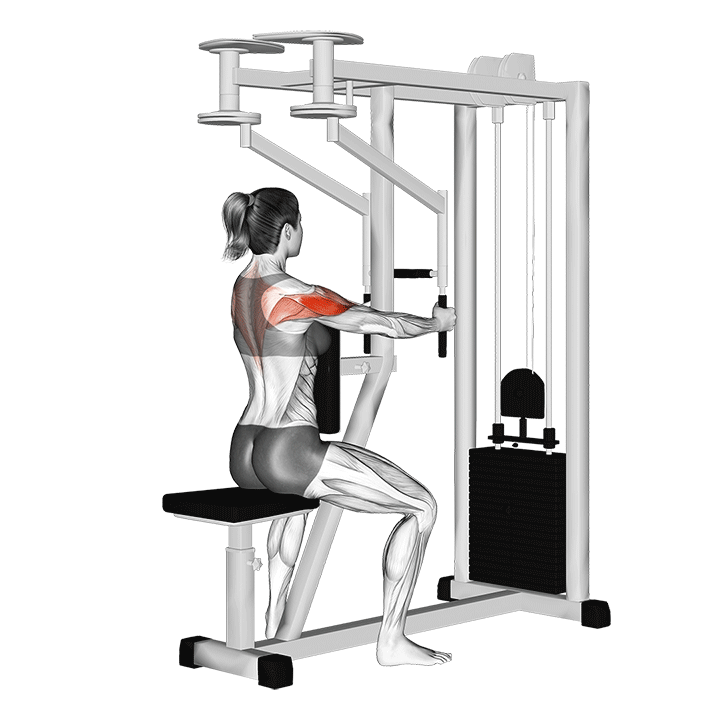
To do so, the lifter simply needs to sit in the machine facing the opposite direction, often leaning forwards slightly so that the upper arms are somewhat behind the body and the posterior deltoid head is in a more advantageous position.
Ideally, a proper deltoid routine will include a set of exercises that target all three heads of the deltoids. Although the machine lateral raise indeed does so, the posterior deltoids may be undertrained and many lifters can indeed benefit from the inclusion of rear delt flys as well.
Dumbbell Y Raises
Dumbbell Y raises are a free weight compound movement targeting all three deltoid heads alongside the muscles of the mid-back.
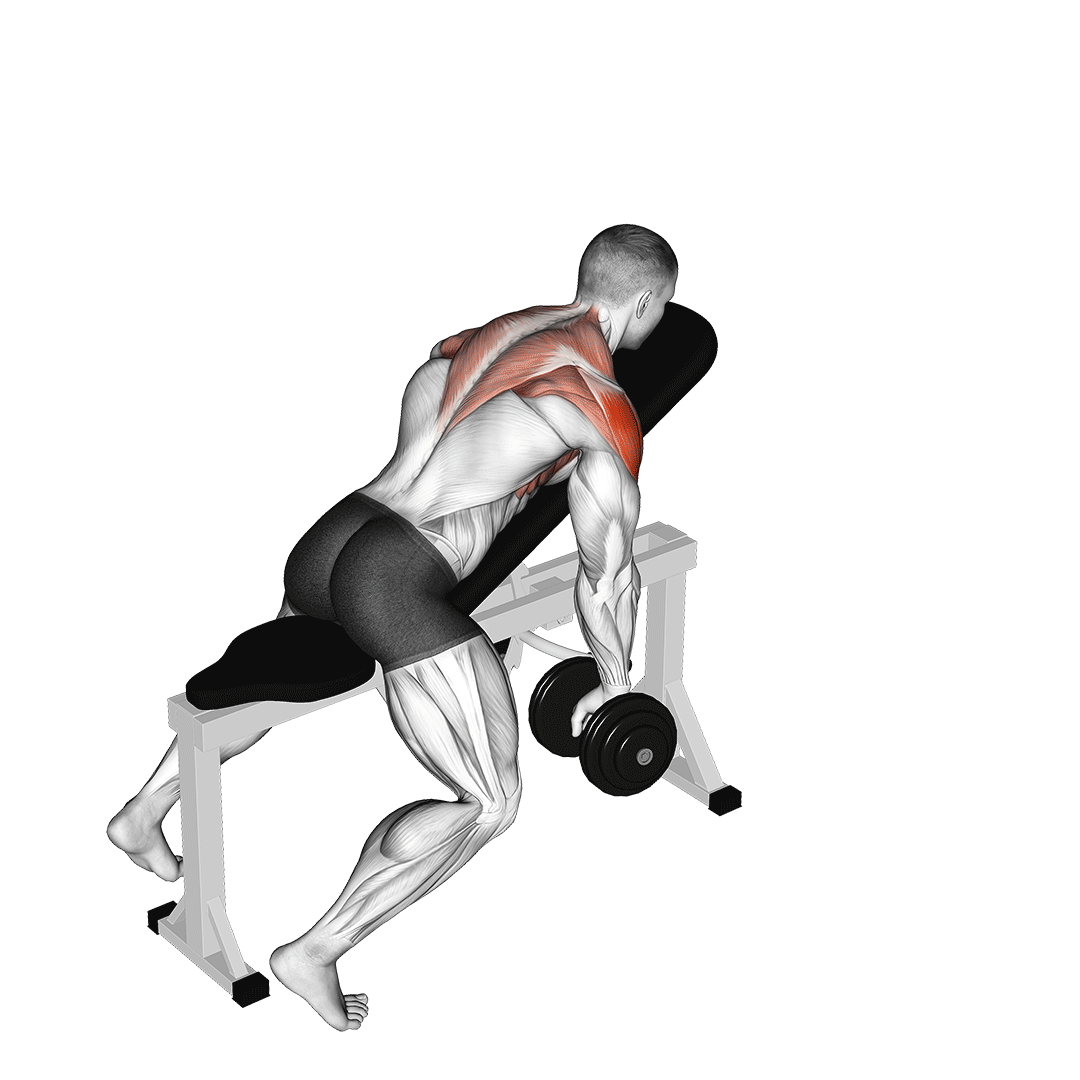
Unlike machine lateral raises, Y raises are considerably more intense and wider reaching as far as muscular recruitment goes - but also allow for far greater development of the deltoids as well. Other benefits include greater reinforcement and strengthening of the shoulder girdle alongside
For training programs where no direct deltoid training movement apart from the machine lateral raise, the dumbbell Y raise is perfect for ensuring the delts are fully worked.
Banded External Shoulder Rotations
For a lower impact movement that functions as both a training and rehabilitative exercise, the resistance band external shoulder rotation may be effective.
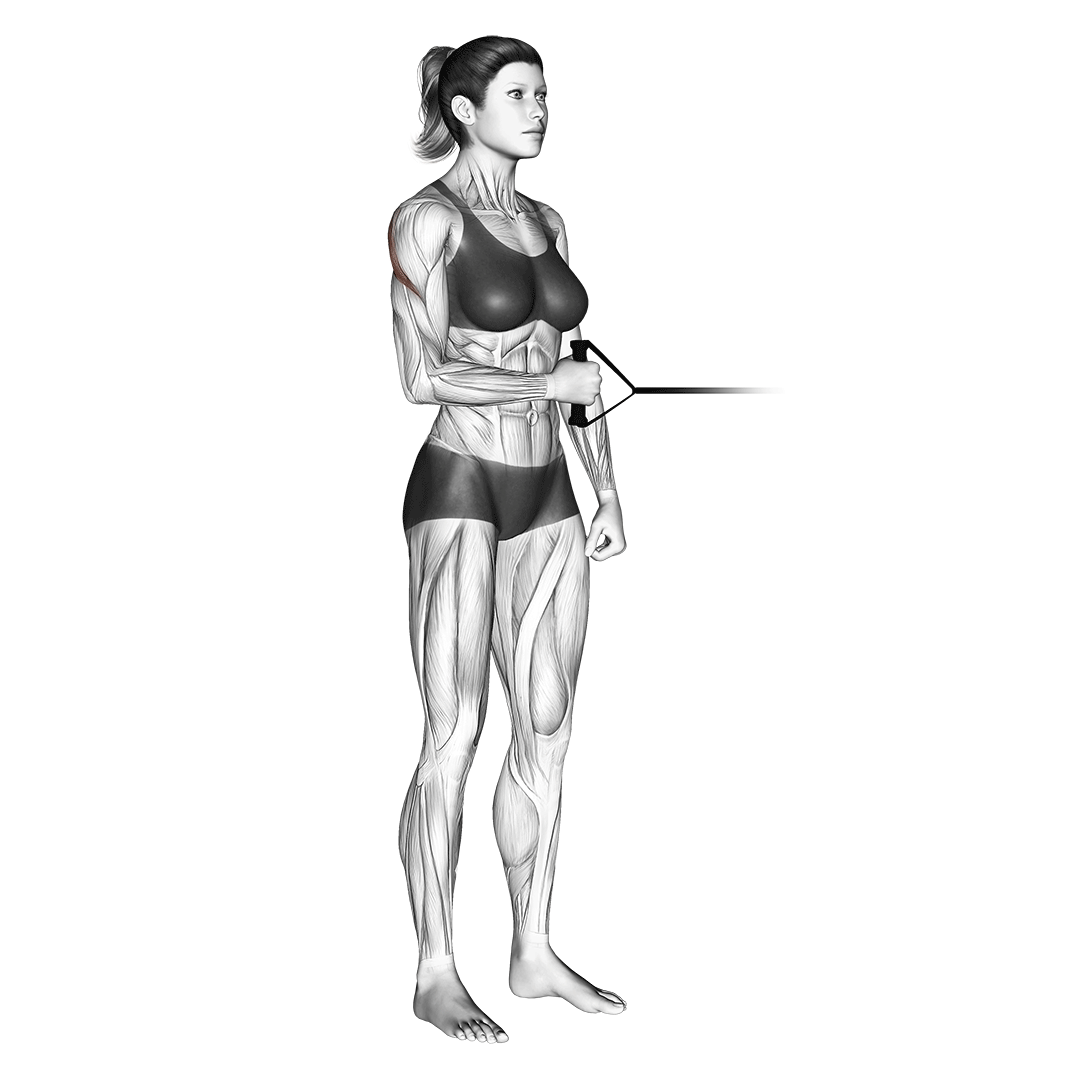
Used for both targeting the medial deltoids and improving overall health of the shoulder structure as a whole, this particular alternative is best employed when the machine lateral raise is too hard on the shoulder joint.
Of course, if you suspect that you’ve injured your shoulders, remember to first speak to a medical professional prior to performing further exercises.
Frequently Asked Questions (FAQ)
Is the Lateral Raise Machine Good for You?
Yes - machine lateral raises are excellent for improving deltoid mass and strength alongside enhancing the health of the shoulder joint as a whole.
What Will Happen If I Do Lateral Raises Every Day?
Performing any form of resistance exercise on a daily basis can easily lead to chronic overuse injuries and even overtraining. The lateral raise is no different - and should be performed in workout sessions separated by at least one day of rest for the deltoid muscles.
Is the Lateral Raise Machine Better Than Dumbbells?
In certain aspects, yes. Using the lateral raise machine instead of dumbbells can allow for a safer, more adjustable and more comfortable exercise - but will also reduce the presence of isometric muscular contraction.
Essentially, the machine lateral raise is better for both novices and those seeking hypertrophy, whereas dumbbell lateral raises are better for functionality and general strength development, however small that may be.
References
1. Aerenhouts D, D'Hondt E. Using Machines or Free Weights for Resistance Training in Novice Males? A Randomized Parallel Trial. Int J Environ Res Public Health. 2020 Oct 26;17(21):7848. doi: 10.3390/ijerph17217848. PMID: 33114782; PMCID: PMC7662789.
2. Coratella G, Tornatore G, Longo S, Esposito F, Cè E. An Electromyographic Analysis of Lateral Raise Variations and Frontal Raise in Competitive Bodybuilders. Int J Environ Res Public Health. 2020 Aug 19;17(17):6015. doi: 10.3390/ijerph17176015. PMID: 32824894; PMCID: PMC7503819.

